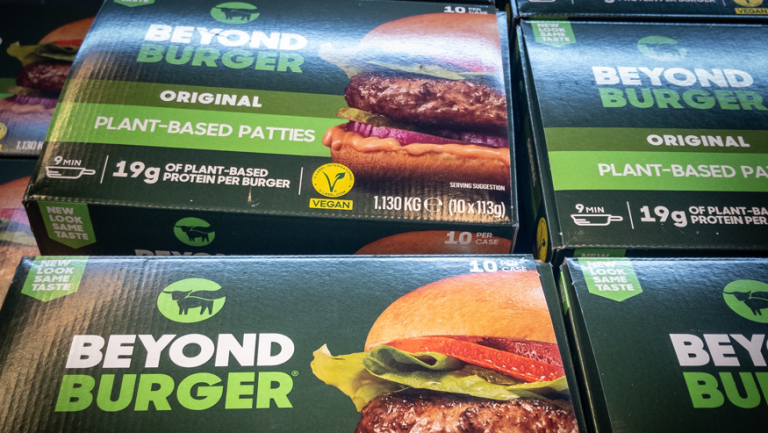The steep tariff escalation, building on a previously announced 25% levy that kicks in from Thursday, targets Indian goods with significant exposure to U.S. demand. Though only around 20% of India’s goods exports head to the U.S., several niche categories, ranging from ready-made garments to precision auto parts and seafood, are heavily reliant on American buyers.
“The escalation from 25% to 50% tariffs will create sector-specific pressures rather than broad market disruption for Indian equities. The Nifty 50’s limited 9% direct exposure to the U.S., primarily concentrated in IT services, which remain exempt from goods-based duties, provides substantial insulation,” said Nitant Darekar, Research Analyst at Bonanza.
However, stocks in gems and jewellery, apparel, textiles, and chemicals face immediate headwinds as these sectors represent the most vulnerable $8 billion export segment, Darekar said.
“The most-impacted sectors are textiles (Gokaldas/Kitex), Chemicals (Camlin, Aarti and Atul), and Auto Ancs (BHFC/Suprajit/Sona BLW), with direct export exposure to the US,” said Seshadri Sen of Emkay Global.
“This is a tough period to navigate for investors,” Sen warned. “The terms of the final trade deal could still be considerably different, though a worst-case, highly damaging scenario has presented itself.”
Here’s a sectoral breakdown of Trump’s 50% tariff impact from a stock market perspective:
Auto stocks
Auto component makers with high U.S. revenue share were among the hardest hit. Bharat Forge, with 40–45% of revenue from the U.S., dropped over 3%, while Sona BLW Precision, which earns 30–35% from the U.S., fell nearly 2%.
Steel Strips Wheels, which sends 63% of its export volumes to the U.S., fell 2.2%, while Garware Hi Tech Films, deriving 45% of its revenue from the U.S., dropped 3.5%. Tata Motors, largely insulated due to existing US-UK and US-EU tariff frameworks on JLR exports, still shed 2.4%.
Textiles
Indian textile stocks were among the worst performers, reeling from the tariff-induced erosion in competitiveness. Shares of Gokaldas Exports and Pearl Global fell 3.9% and 3.2% respectively. Kitex Garments, with 70% of sales to the U.S., plunged 5%. KPR Mill and Vardhman Textiles slid 6.2% and 2.8%, respectively.
“If effective, the steep 50% tariff would be similar to a trade embargo,” Nomura said. “Lower value addition and thinner margins across industries like textiles and gem & jewellery could jeopardise operations.”
The pain is accentuated by favourable deals signed by competitors. Pakistan’s rate has been cut to 19%, Bangladesh’s to 20%, while Vietnam has also reduced its rate to 20%, widening the gap for Indian exporters.
Jewellery and Gems
Gems and jewellery exporters were not spared. Goldiam International, which earns 90% of its revenue from the U.S., fell 4.7%. Granite exporter Pokarna dropped 4.5%.
Shrimp stocks
Seafood exporters bore the brunt of the selloff after the U.S. hiked tariffs to 50%. Avanti Feeds fell 5.3% to Rs 631.80, Apex Frozen Foods slid 4% to Rs 218.80, and Waterbase Ltd dropped nearly 2% to Rs 48.18.
Capital Goods
The impact on capital goods stocks was mixed. Cummins India, which derives 5–15% revenue from sales to its U.S. parent, slipped about 1%. Thermax fell 2%, while Jefferies had previously noted that “China tariffs higher, so might have limited impact.” KEI Industries, with less than 5% U.S. exposure, was flat.
Chemical stocks
Chemicals took a hit, especially companies involved in refrigerator gas exports. Navin Fluorine International, with 24% U.S. revenue exposure, fell 1.7%, while PI Industries and SRF Limited were down 1.6% and 2.5%, respectively.
Jefferies noted earlier that “agrochemicals are broadly outside the tariff ambit,” providing some cushion for the sector. However, Navin Fluorine and SRF remain vulnerable due to their U.S.-facing product portfolios.
Oil refiners
Energy stocks bore the brunt of a parallel tariff penalty tied to India’s ongoing purchases of Russian crude. Reliance Industries fell 1.1%, while Bharat Petroleum and Hindustan Petroleum each dropped around 1.5%. Indian Oil Corporation lost nearly 1%.
“Reliance Industries, BPCL, HPCL and IOCL may need to diversify sourcing beyond Russia,” Jefferies had previously said, warning that narrowing discounts on non-Russian barrels could erode refinery profitability.
Solar stocks
Solar firms with large U.S. order books also tumbled. Waaree Energies, with 59% of its 25GW overseas order book headed to the U.S., dropped 3.6%. Premier Energies lost 1.8%.
From ‘Howdy Modi’ to tariff walls
The tariff move underscores a marked deterioration in the relationship between Washington and New Delhi since the much-publicised February meeting between Trump and Prime Minister Narendra Modi. In recent weeks, Trump has publicly referred to India’s economy as “dead,” branded its trade barriers “obnoxious,” and accused it of “profiting” from cheap Russian oil while remaining silent on Russia’s war in Ukraine, now in its fourth year.
India’s Ministry of External Affairs called the move “extremely unfortunate,” and pointed out that “many other countries are also importing Russian oil in their national economic interest.”
Trade between the world’s largest and fifth-largest economies is valued at over $190 billion, according to Reuters, and the latest escalation throws a spotlight on the frictions that could derail a steadily growing bilateral economic relationship.
Also read | Explained: What Trump’s 50% tariff mean for stock market investors and should Nifty bulls worry
(Disclaimer: Recommendations, suggestions, views and opinions given by the experts are their own. These do not represent the views of the Economic Times)








